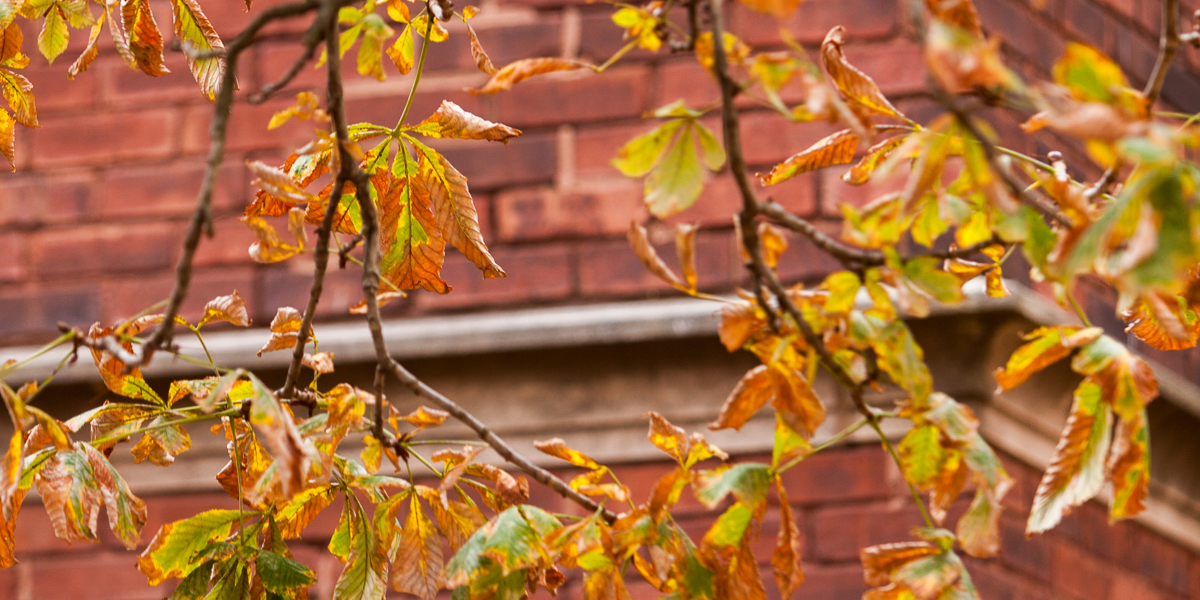

Venture Boldly


1826-1899
This survey of Knox College history was prepared by Grant Forssberg '09 for a special research project on College history.
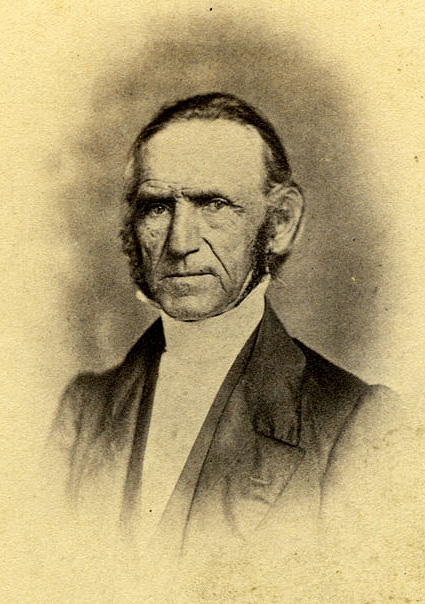
In the spring of 1826, in Whitesboro, New York, the notable Reverend George Washington Gale experiments with schooling groups of young men who were eager for an education, but unable to pay for the tuition. In exchange for tuition, Gale requires his students to perform three and a half hours of manual labor each day to pay for expenses for instruction, books, board, and lodging. The program works well, and prepares the way for Gale's future ventures in manual labor education-including his Oneida Institute and later, Knox College.
Joining manual labor with education was well suited to the benevolence preached in the churches of the Burned Over District. It equalized opportunities for students of all backgrounds without the "evil of charity," and built upon self-reliance and "health and bodily vigor" that was sometimes lost due to dedicating one's self exclusively to studies and neglecting physical exercise.
More on Knox College's origins
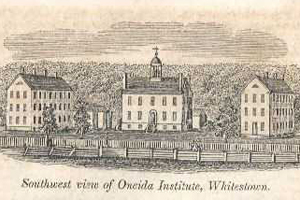
The Oneida Institute was Gale's first manual labor college.
Seven students enroll for the first term at George Washington Gale's Oneida Institute, the realization of Gale's longstanding dream of establishing a manual labor college.
In 1833, Oneida Institute students form an Anti-Slavery Society. The Oneida Institute was the first manual labor school of its kind to admit African-Americans, and was endorsed by the American Anti-Slavery Society. Abolitionism was unpopular in most segments of American society, and abolitionists were considered radical and the fringe of society. The New York State Senate proposed withdrawing funding from Oneida Institute because of the radical nature of the school.
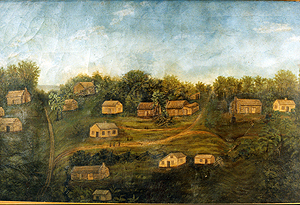
Painting of the "Log City" tract where Galesburg and Knox College were founded.
George Washington Gale makes public his desire to found a college on the manual labor plan in the West and hands over the administration of the Oneida Institute to abolitionist Beriah Green. Before the name Knox College is coined, Gale and his subscribers refer to the prospective school as "Prairie College."
In August, an exploring committee chooses Knox County as the site for their new college, having searched most of Illinois and Indiana. The land -- known as Log City -- is located on Illinois's military tract, government land that was inexpensive. Gale and the committee subscribe $20,000 to buy roughly twenty square miles of land at a cost of approximately $16,000, only $800 dollars per square mile. Three sections at the southern edge of the township are to be reserved for use by the college and the rest of the land was sold to the subscribers. Any surplus funds will be utilized for the college's endowment, and after that for the endowment of a Female Seminary to house female students.
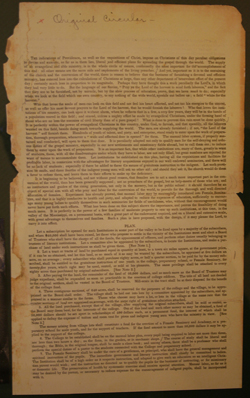
Knox's founding Circular and Plan
On January 7th, George Washington Gale releases his "Circular and Plan," publicizing his manual labor venture in the West. Clearly established in the "Circular and Plan," the mission of the college was to provide "laborers" for god and ministers of the gospel. Gale said:
"‘Pray ye the Lord of the harvest to send forth laborers,' and the fact that they are to be furnished, not by miracle, but by the slow progress of education shows that we have much work to do...The manual labor system, if properly maintained and conducted, will open to them the door."
Read the Knox College "Circular and Plan"
All told, 175 settlers arrive in the summer and fall of that year. The group settles in Henderson Grove, three and one-half miles northwest of the current Public Square, on a site known as Log City. The first sessions of the Knox Academy, the equivalent of a secondary school, are held in one of Log city's cabins. The Academy was necessary to educate local students to the level required to enter college.
The First Anti-Slavery Society in the State of Illinois is organized in Log City in December. The town's prominence as an abolitionist stronghold makes it the subject of more criticism than praise. In the surrounding communities, Galesburg was loathed for its stance on slavery. Many settlers in 1830s Illinois were from Kentucky and Indiana, and have a tendency to be slavery sympathizers.
Also in December, the name of the college was changed from Prairie College, to Knox Manual Labor College. It is a mystery who the college is named after, but two likely candidates for the honor are General Henry Knox, after whom the county is named, and Calvinist reformer John Knox.
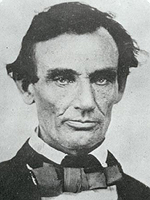
Lincoln
The College's trustees appoint Knoxville native James Knox and settler Nehemiah West to work on securing a charter for Knox Manual Labor College. The two travel to Vandalia, at the time the Illinois state capitol, to apply and on February 15, 1837 Knox Manual Labor College is granted a charter. Abraham Lincoln, then a state representative, votes in favor of the College.
Also on this momentous day, the first steps are taken to organize the First Church of Galesburg, where both the colony's Congregationalist and Presbyterian denominations would worship. As the town's infrastructure grows, settlers begin to move out of Log City and to build in the current city limits on the southern edge of town. As the town grows it became notable for its abolitionist character.
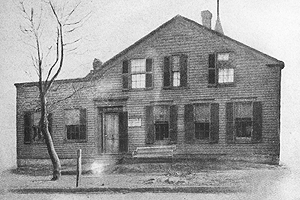
Original Knox Academy building
The Knox Academy opens on the Northeast corner of what is currently Main and Cherry Streets with two faculty and 40 students. The school is co-educational and fulfills the function of a public school house since there are none nearby.
Chauncey Colton, noted for his general store in the old Log City, builds the first public school house with Eli Farnham serving as the school's first teacher. The greater availability of education in the town expands upon the number of students eligible to enter college.
The year also marks the national organization of the Liberty Party, a political party which begins as an anti-slavery movement led by James G. Birney. In the same year, the Knox County Liberty Association is founded in Galesburg with Matthew Chambers presiding and schoolteacher Eli Farnham serving as its secretary. The Liberty Party will ultimately unite with the Whigs and Dems to form the Free Soil Party, which becomes the Republican Party shortly before 1856. The Liberty Party represents the politicization of the abolitionist movement, with which the Galesburg Settlers are becoming actively involved.
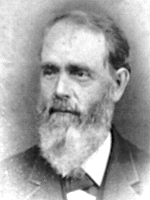
Wright
One facet of the abolitionist movement that Galesburg residents became heavily involved with is the Underground Railroad -- a network of safe houses and supporters who spirit escaped slaves to freedom -- with Galesburg becoming a principal station on the Illinois Underground Railroad. George Washington Gale; the college's first and second presidents, Hiram Kellogg and Jonathan Blanchard; and several college trustees and faculty will play active roles harboring and escorting slaves along the Underground Railroad over the coming years.
Among the few written records of the Underground Railroad in the area is the journal of the Reverend Samuel Wright, a Knox trustee from 1849 to 1872. In an entry from the journal from 1843, he writes: "February 6 ... another fugitive from slavery came along, which makes 21 that have been through this settlement on their way to Canada."
More on Knox and the Underground Railroad
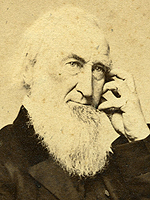
Kellogg
First Academic Year Enrollment: 10 in the College, 147 in the Academy
The Reverend Hiram H. Kellogg, an educator from Clinton, New York, and one of the original promoters of the College, is selected as its first President.
Knox College begins classes in the fall of 1841. The College year is split into two terms of 20 weeks each, and tuition is $24 a term. The College has courses in Latin, Greek, mathematics, religious studies, astronomy, chemistry, natural philosophy, mineralogy, and physiology.
Coinciding with the beginning of classes in 1841, the first college academic building is constructed on the campus grounds -- the Knox Seminary, which is built at the current intersection Seminary St. and Tompkins. The plan is for the building to be used for educating female students, but there are no adequate facilities for the male students and the men used it instead.
1841 also marks the incorporation of Galesburg as a village. The population of the town in 1841 was 500.
Enrollment (1842): 15 in the College, 160 in the Academy
Enrollment (1843): College: 24; Academy: 155
President Kellogg travels to the World Anti-Slavery Convention in London to secure donations and books for the College. On a similar trip, agents from Oberlin College manage to bring back $30,000. Kellogg's trip would not be as successful, however, and he brings back only $1,000 and $500 worth of books. The convention proves to be important because Kellogg meets noted abolitionist Jonathan Blanchard there, who would later become the second President of Knox College.
In the early months of 1843, the Seminary burns to the ground, crippling the College. Classes have to be held in the attic of the academy and the board of trustees does not meet for 18 months. Gale goes East in the spring and brought back $800 in assets and 1,600 volumes of books. The loss of the Seminary building leads to the later construction of two more campus buildings, known as "East Bricks" and "West Bricks."
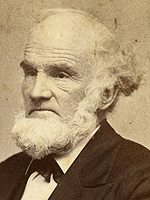
Blanchard
Enrollment: 27 in the College, 172 in the Academy
The Trustees invite President Kellogg to resign. He has failed as a fundraiser, and the College is in poor condition financially. The extent of his anti-slavery activities and congregationalism are also antagonizing George Washington Gale. The Reverend Jonathan Blanchard, a noteworthy abolitionist pastor from Cincinnati, assumes the presidency.
With a generous donation from philanthropist John Payson Williston, the construction of the first building on the Knox College campus -- "West Bricks" -- is completed in 1845. Williston is built to house students, but also serves as classroom space.
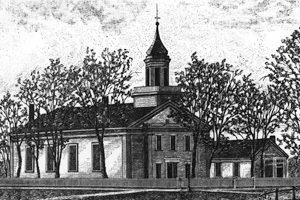
Colony Church
Enrollment: 33 in the College, 182 in the Academy
The College's first class of nine students is graduated, with services in the Colony Church finishing just in time for commencement. Four become ministers of the gospel, while one becomes a professor of mathematics at Knox, one an editor of several Galesburg newspapers, one a doctor, and another, a lawyer and partner of Robert G. Ingersoll.
The town grows at a steady pace. There are 70 houses in Galesburg; but no sidewalks, just paths. There are planks for crossing streams and the absence of any trees is probably the most notable town feature.
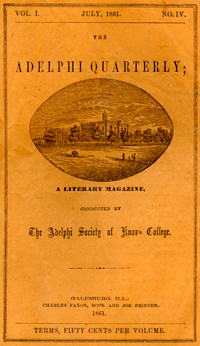
Cover of an 1861 edition of the Adelphi Quarterly
Enrollment: 26 in the College, 201 in the Academy
In May, the Adelphi Literary Society, which had been organized the previous spring, is chartered. The Adelphis use space in the new Academy building constructed in Public Square.
In 1847, the trustees form the Female Collegiate Department. The department features a three year course for women, which is wholly separate from the men's course. Upon completion of the course the women do not receive bachelor's degrees either.
More on women's education at Knox
Enrollment: 53 in the College, 286 in the Academy
Knox College President Jonathan Blanchard serves as a Presidential elector for the anti-slavery Free Soil Party, which had formed from the old Liberty Party. Knox College attracts students from several states outside the Midwest and even abroad. Students from Pennsylvania, Vermont, Ohio, Indiana, the United Kingdom, and Ireland are among those enrolled.
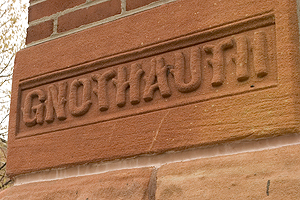
Detail on Alumni Hall commemorating the founding of the Gnothautii Society in 1849.
Enrollment: 58 in the College, 279 in the Academy, 14 in the Female Collegiate Dept.
The Gnothautii Society is organized. This organization and the Adelphi Society, during their long histories, not only promoted forensic and literary activities, but also built up large and useful libraries, and conducted courses for the general public.
The first outward signs of a religious schism between the Presbyterians and Congregationalists on the Board of Trustees become apparent. George Washington Gale, in an attempt to gain a Presbyterian majority on the board, proposes his son Selden Gale and personal friend and attorney Orville Browning for election. The election of the two -- which was later nullified due to procedural errors -- leads Congregationalist Jonathan Blanchard to resign in protest, which he eventually reconsiders.
More on Knox's religious schism
Enrollment: 49 in the College, 299 in the Academy, 26 in the Female Collegiate Dept.
In the spring of 1850, the first three women graduate from the Female Collegiate Dept. Rather than Bachelor's degrees, the three graduates are given diplomas. The three women are: Ann Dunn, whose parents were among Galesburg's original settlers; Sarah Fish, future wife of James F. Dunn, Galesburg's mayor during 1861 and 1863; and Margaret Gale, the daughter of George Washington Gale, who would marry H.E. Hitchcock, Knox class of 1846 and later a professor at the college.
The year also marks the passage of the Fugitive Slave Act, requiring Northern citizens to return escaped southern slaves to their owners or face a fine. Led by former Chicago Congregationalist pastor Flavel Bascom, members of the Board of Trustees and the college community express opposition to the law.

Enrollment: 51 in the College, 250 in the Academy, 27 in the Female Collegiate Dept.
Three distinguished scholars form the core of the faculty during the latter half of the 19th century. Milton L. Comstock (left), in mathematics and Albert Hurd (right) in natural sciences, join the Faculty. They, along with George Churchill (standing), principal of the Knox Academy, the College's preparatory school, who joined the faculty in 1855, were dubbed "The Great Triumvirate."
The religious schism developing within the college community leads a group of Presbyterians, led by George Washington Gale, to leave the Old First Church to form the First Presbyterian Church. This action signifies the seriousness of the sectarianism affecting both the college and the community.
Enrollment: 53 in the College, 292 in the Academy, 40 in the Female Collegiate Dept.
Lombard College, originally called the Illinois Liberal Institute, is established in 1853 by the Universalist Church in Galesburg. The school's charter is granted 14 years to the day after Knox received its own charter. Lombard admits women on an equal basis with men from the earliest days of the college.
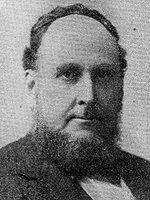 Notable Alumni: Alfred Craig
Notable Alumni: Alfred Craig
Craig graduates and later becomes a Knox County Judge and Chief Justice of the Illinois Supreme Court. Another alumnus, Iowa native Jeremy Goldsmith Anderson, graduates from the Knox Academy in 1852. After holding a variety of jobs over the next several years, Anderson, a staunch abolitionist, meets John Brown and subsequently became his close associate. In 1859, Anderson would be killed after he and Brown organize a raid at the arsenal at Harper's Ferry. Brown himself would survive only to be hung for treason in an event that electrified the nation and hastened the outbreak of the Civil War.
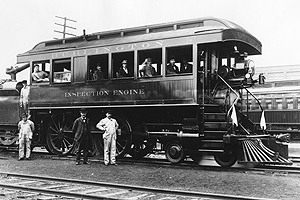
Enrollment: 55 in the College, 253 in the Academy, 40 in the Female Collegiate Dept.
Galesburg wins the competition with Knoxville over the location of the new Chicago, Burlington, and Quincy Railroad line, which becomes the first railroad to pass through the town. Local businessman Chauncy Colton is influential in the effort. Because of the railroad, within one year Galesburg's population quadruples.
Enrollment: 59 in the College, 291 in the Academy, 50 in the Female Collegiate Dept.
The First Congregational Church is organized by parishioners expelled from the Old First Church due to increasing tension brought on by the religious schism occurring in the college and town.
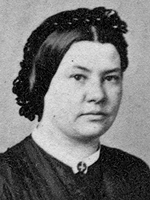 Notable Alumni: Mary Allen West
Notable Alumni: Mary Allen West
At the commencement exercises in the spring, West -- the daughter of Nehemiah West and also the first child born in Galesburg -- graduates from Knox College with a diploma at the age of 17. She would go on to become the Superintendent of Galesburg schools and a missionary with the National Christian Temperance Union.
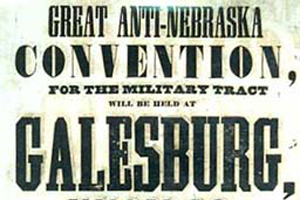
Detail of a political flyer circa 1855
Enrollment: 56 in the College, 317 in the Academy, 58 in the Female Collegiate Dept.
2,000 people hear a discussion of the Nebraska Bill on the steps of the First Presbyterian Church. In the Presidential election, Fremont is nominated as the first presidential candidate of the newly organized Republicans. A majority of the townspeople, 699, voted for Fremont in the election. Because of their abolitionist leanings, the Republican Party is widely popular in Galesburg. In 1856, the town bills Lincoln to speak.
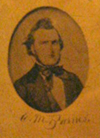 Notable Alumni: Charles M. Barnes
Notable Alumni: Charles M. Barnes
Barnes graduates from Knox in 1856. After serving as a chaplain during the Civil War, he opens a used bookstore in his Wheaton, Illinois, home, a venture which would lead to the founding of the Follett Corporation, a publishing company in Chicago. One of Barnes's sons, William, in 1917 co-founds the Barnes & Noble bookstore chain. More on Barnes and Knox
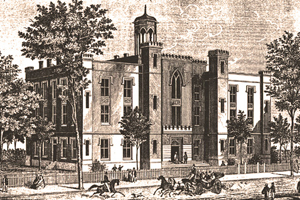
Lithograph of Old Main
Enrollment: 51 in the College, 329 in the Academy, 66 in the Female Collegiate Dept.
Knox is in a period of financial stability. Largely due to the railroad, the assets of the college total $400,000 dollars. With this money the college improves its physical infrastructure, beginning with this year's completion of the Female Seminary and finishing with the summer 1857 completion of Old Main. Both buildings are still currently standing, the Female Seminary is now the privately owned Whiting Hall across from the County Courthouse on Tompkins St, and Old Main graces the center of the Knox College Campus.
On June 27, 1857, the Board of Trustees meet before commencement and ask for the resignations of Jonathan Blanchard as President, and George Washington Gale as Professor of Belles-Lettres. The resignations are meant to end the religious schism that had been plaguing the college for the past decade. The 1857 Commencement is disrupted by student protests; all but one of the graduates agrees to deliver his senior address.
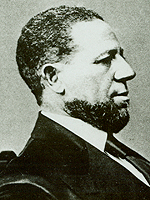 Notable Alumni: Hiram Rhodes Revels
Notable Alumni: Hiram Rhodes Revels
Revels finishes his coursework at the Knox Academy. Later, Revels would go on to become the first African-American U.S. Senator (Mississippi) and the President of Alcorn University.
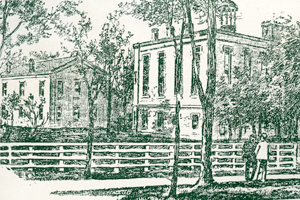
Illustration of Old Main (right) and "East Bricks"
Enrollment: 55 in the College, 366 in the Academy, 60 in the Female Collegiate Dept.
Jonathan Blanchard is invited by the Trustees to continue another year as President of the College in an effort to lure back students threatening to leave the College.
The College's increasing enrollment is overtaking the available space and more room is "imperatively" needed. Average classes in the Academy are from 30 to 60 students. In the women's collegiate department, the time required for women to complete their coursework is increased from three years to four.
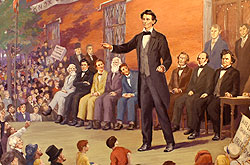
Painting of Abraham Lincoln at the fifth Lincoln-Douglas Debate, held on the east steps of Old Main
Enrollment: 39 in the College, 257 Academy, 53 Female Collegiate Dept.
On October 7th, 1858, Abraham Lincoln and Stephen Douglas debate the moral issues of slavery and other political issues of the day on the steps of Old Main before a crowd estimated as high as 20,000. The debate is the fifth of seven debates held throughout the state of Illinois in preparation for the 1858 United States Senate elections. Of Douglas's position, Lincoln said:
"He is blowing out the moral lights around us when he contends that whoever wants slaves has a right to hold them."
Although Lincoln is narrowly defeated by Douglas in the Senate election, his performance during the debates win him national fame, influencing his nomination as the Republican candidate for President in the 1860 election.
Lincoln-Douglas Debates podcast
Jonathan Blanchard leaves Knox College. Presbyterians now hold the majority in the college's administration. Five candidates for President had been turned down when the board, with a vote of 13-11, narrowly appoints Dr. Harvey Curtis, a Presbyterian Minister from Chicago.
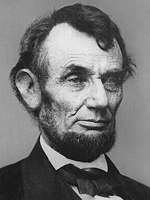
Enrollment: 50 in the College, 166 in the Academy, 36 in the Female Seminary
Abraham Lincoln, during his successful campaign for President, receives an honorary degree from Knox College. It is the first such doctorate conferred by Knox, and Lincoln's first educational degree of any kind. Writing to Lincoln, a Knox trustee advises the President:
"You will therefore consider yourself a 'scholar' as well as a 'gentleman' and deport yourself accordingly..."
More Knox honorary degree recipients
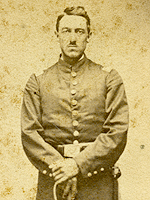 The Civil War seriously affects Knox College. A member of the class of 1863 recalls:
The Civil War seriously affects Knox College. A member of the class of 1863 recalls:
"Most of the men went to the War, leaving only five to complete the course. Ten girls did their best by stepping into the vacant places, and men and women recited together in College and Seminary for the first time."
The Ladies' Moral Improvement Society is founded in 1861 to provide women with the opportunity to develop their oratorical skills. LMI, as it was clandestinely referred to, was very comparable to the men's Gnothautii and Adelphi literary societies and would play a role in the debate over the separation of men and women's courses that culminated in President Curtis's resignation and subsequent coeducation at Knox College.
Enrollment: 51 in the College, 128 in the Academy, 49 in the Female Seminary
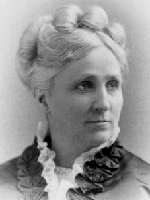
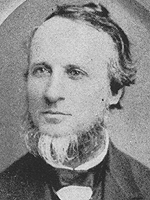
Lydia Howard, the principal of the Knox Female Seminary and two other members of its faculty resign amidst a controversy with President William Curtis.
Howard, a former faculty member at Mount Holyoke, had been hired by the Knox Board of Trustees to transform the Female Seminary into a "true daughter of Mount Holyoke," the contemporary standard in women's education. This entailed ramping up the Seminary's curriculum to match what was being taught at Holyoke and other leading seminaries of the day.
President Curtis, a product of New England conservatism and a proponent of the strict separation of men and women's courses, did not accommodate Howard's progressive agenda and got into a physical altercation with the principal over a draft of the upcoming year's catalogue; attempting to seize it from her hand. The following day, Knox students assembled in the lawn outside of Old Main ringing the bell and causing a commotion and demanded-and received-Curtis's resignation in the face of his actions towards Howard. Howard would later become the president of Wellesley College.
Enrollment: 58 in the College, 106 in the Academy, 40 in the Female Seminary
The Congregationalist Reverend John Gulliver is unanimously elected by the Knox Board of Trustees. At the June 23rd, 1868 meeting of the Trustees the Board resolved that "there can be no broader or better basis for the cause of true education than that of a common evangelical Christianity unmarred by controversy and undivided by sect." The decision of the board's Presbyterians to confirm Gulliver despite his denomination was in concordance with the compromise of 1866, which provided that future administrators should be elected without regard to denomination.
Gulliver is noted to have raised the educational standards at Knox, but many disapproved of his lavish expenditures on the college's behalf. The Board of Trustees concurrently demanded that his administration cutback on college spending, which precipitated Gulliver’s resignation.
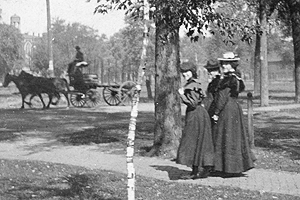
Women in Standish Park.
Enrollment: 58 in the College, 180 in the Academy, 41 in the Female Seminary
"College Park" is sold to the city of Galesburg for the purpose of constructing a county courthouse. In 1859, Knox College had persuaded the city of Galesburg to close down the segment of Broad Street dividing the plot of land now comprising the block between South and Tompkins Streets and Cedar and Cherry streets so it could be converted into a park. For 10 years the land served contributed to the aesthetic of the college grounds until the Board of Trustees was compelled, despite objections from the college community, to sell the property to encourage of the relocation of the county seat to Galesburg. In the mid-1870s the western half of the plot -- the current Standish Park -- was developed into an arboretum by Lombard Professor John Van Ness Standish, whose residence was at the site of the current Seymour Library.
Enrollment: 63 in the College, 127 in the Academy, 46 in the Female Seminary
Women are admitted to the men's college course for the first time and are now able to receive the Bachelor of Arts degree in place of the certificate of completion they had received for completing the course at the Female Seminary. The Knox Female Seminary remained open as an option to women who still wanted an education, but did not want the rigors of the full college course.
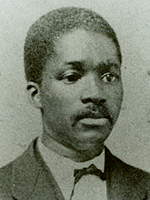 Notable Alumni: Barnabas Root
Notable Alumni: Barnabas Root
Root completes a bachelor's degree at Knox. He is Knox's first "international" student and first Black male graduate, and one of the first Black college graduates in Illinois. Born Fahma Yahny in West Africa, Root also earned a divinity degree at Chicago Theological Seminary and later was a physician and medical missionary in Africa.
Enrollment: 46 in the College, 187 in the Academy, 35 in the Female Seminary
The Knox literary society Adelphi organizes the first interstate oratorical contests. The "Illinois Collegiate Association," formed a year later in 1874 for the purpose of providing contests in oratory, was a prototype for future intercollegiate associations, most notably the National Collegiate Athletic Association.
Enrollment: 41 in the College, 195 in the Academy, 44 in the Female Seminary
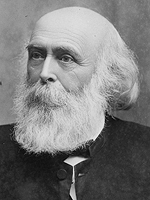
Bateman
Newton Bateman becomes the first President of the College who was not a clergyman. Bateman was a professional educator, a secondary school teacher who rose to principal, county commissioner, a leader in the state teacher’s organization and then state superintendent of public instruction. Bateman’s leadership was characterized by a commitment to fiscal responsibility and frugality that contributed to the college’s financial prosperity under his guidance during the 1880s, facilitating the construction of several new buildings on campus, most notably Alumni Hall. During his tenure Knox also witnessed a substantial increase in enrollment.
Enrollment: 150 in the College, 177 in the Academy, 45 in the Female Seminary
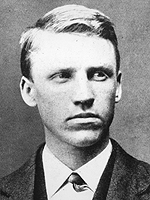 Notable Alumni: Samuel S. McClure
Notable Alumni: Samuel S. McClure
McClure, the infamous "muckraker" journalist and proprietor of McClure’s Magazine, graduates from Knox. As a student, he was instrumental in the beginning of The Knox Student newspaper and served as one of its first editors in chief. McClure’s journalistic career was characterized by a zeal for social commentary and a reformist impulse. When McClure formed the magazine that would bear his name in 1892, he invited two of his classmates from the Knox Class of 1882 to be his partners.
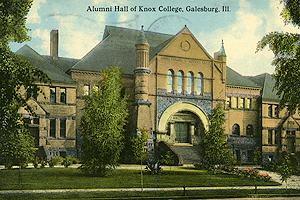
Tinted postcard featuring the main entrance of Alumni Hall (undated)
Enrollment: 254 in the College, 171 in the Academy
Alumni Hall is built for the college's Gnothautii and Adelphi literary societies. Estimated to cost between $35,000 and $40,000, the two story building featured a large, mutual auditorium between opposite wings housing the respective societies; one can still see the Greek letters of both societies carved into the building’s exterior brick. Most notably, the cornerstone for the building was laid by President Benjamin Harrison, who was in Galesburg for a reunion of Civil War veterans.
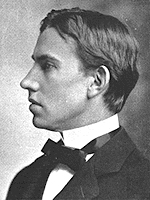
Finley
Enrollment: 273 in the College, 157 in the Academy
John Huston Finley, an 1887 Knox graduate, becomes seventh President of the College. Finley would later become Editor of the New York Times.
The Knox science curriculum is expanded.